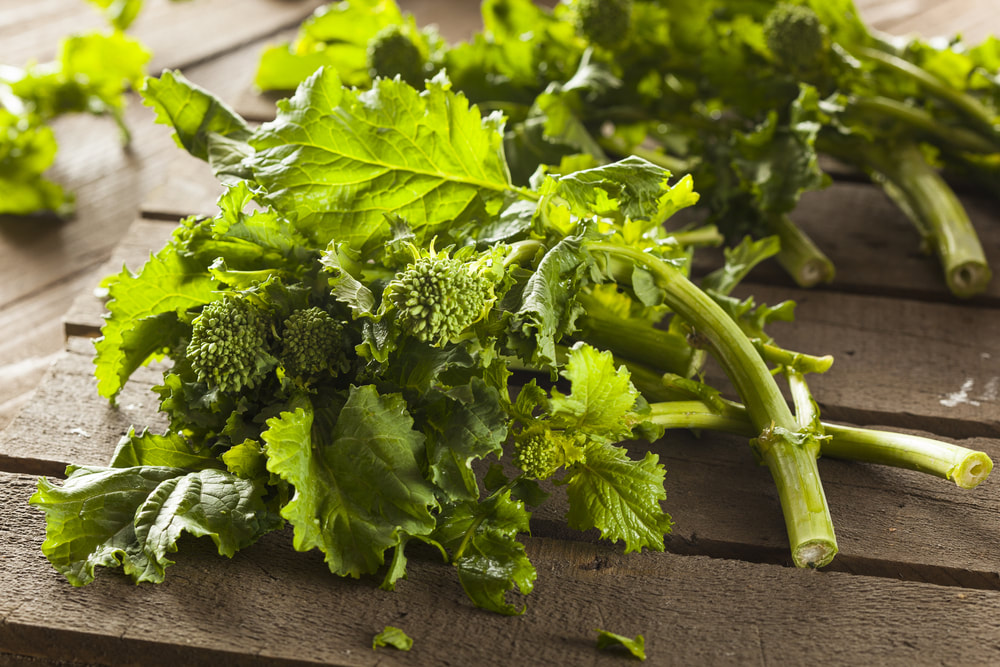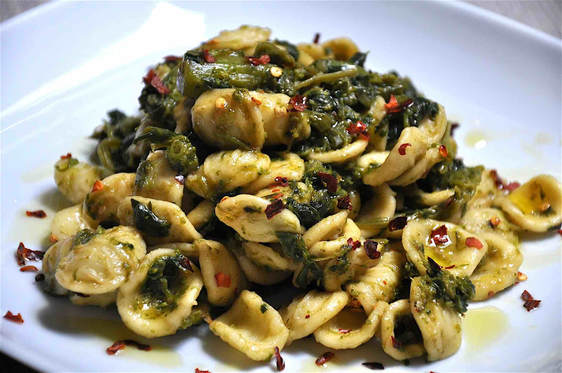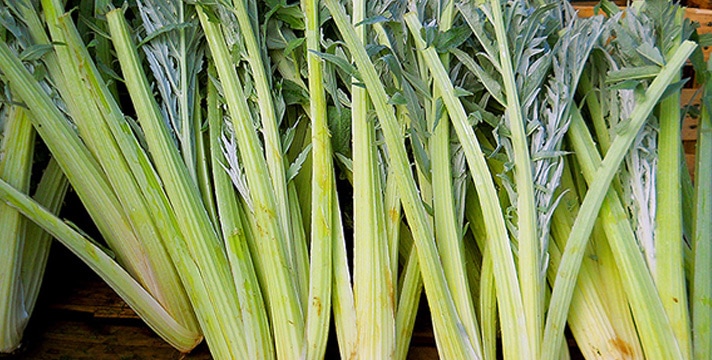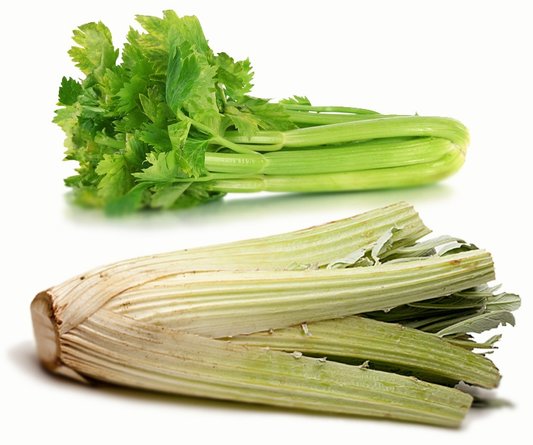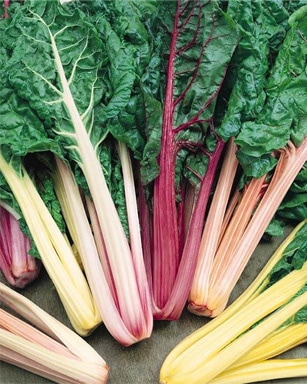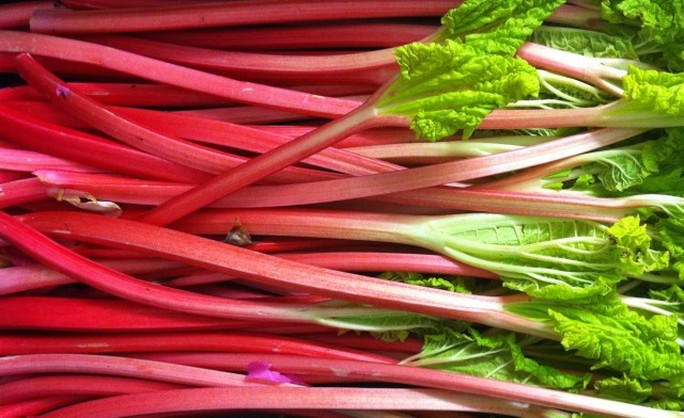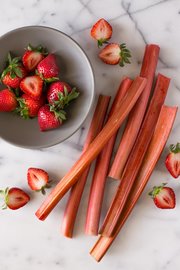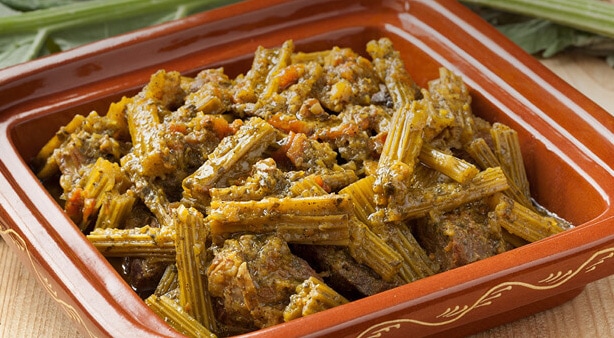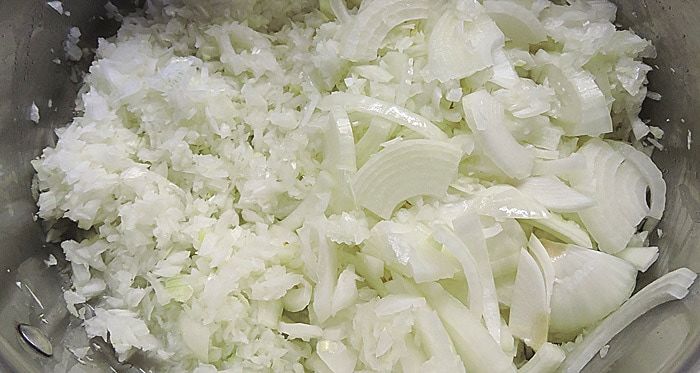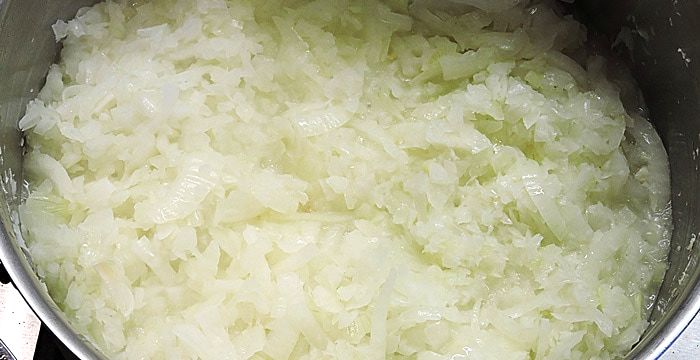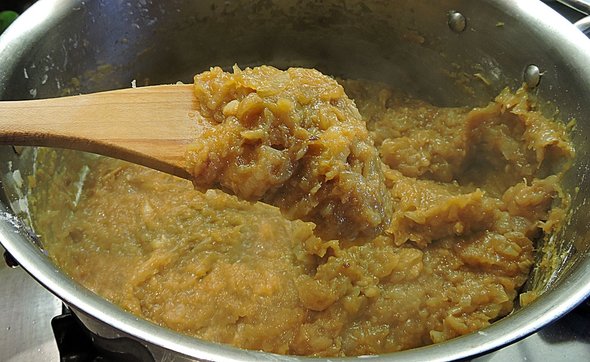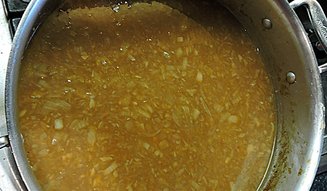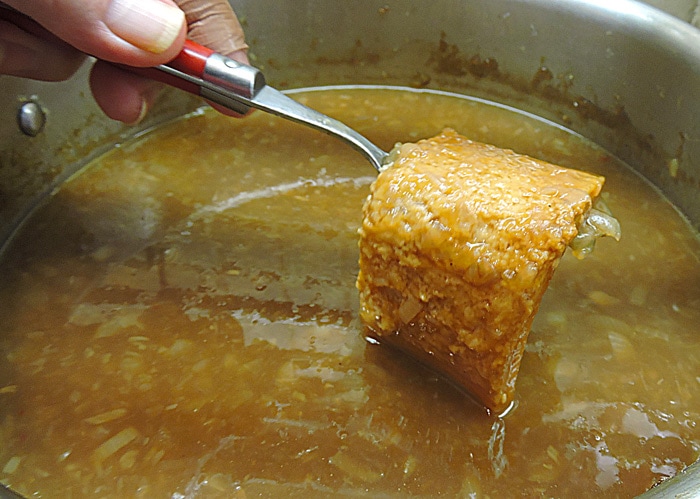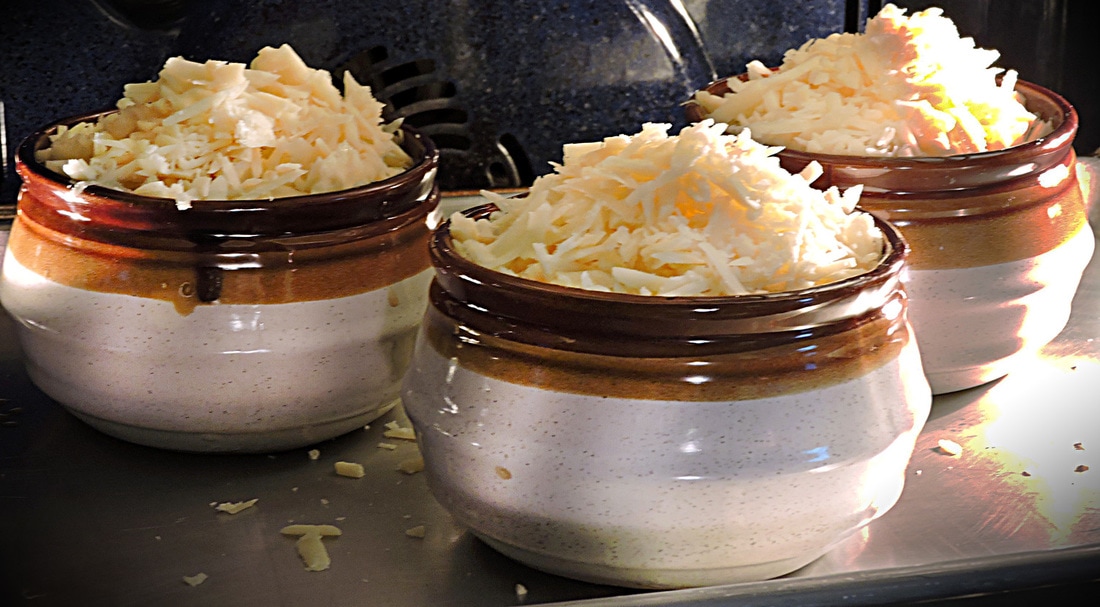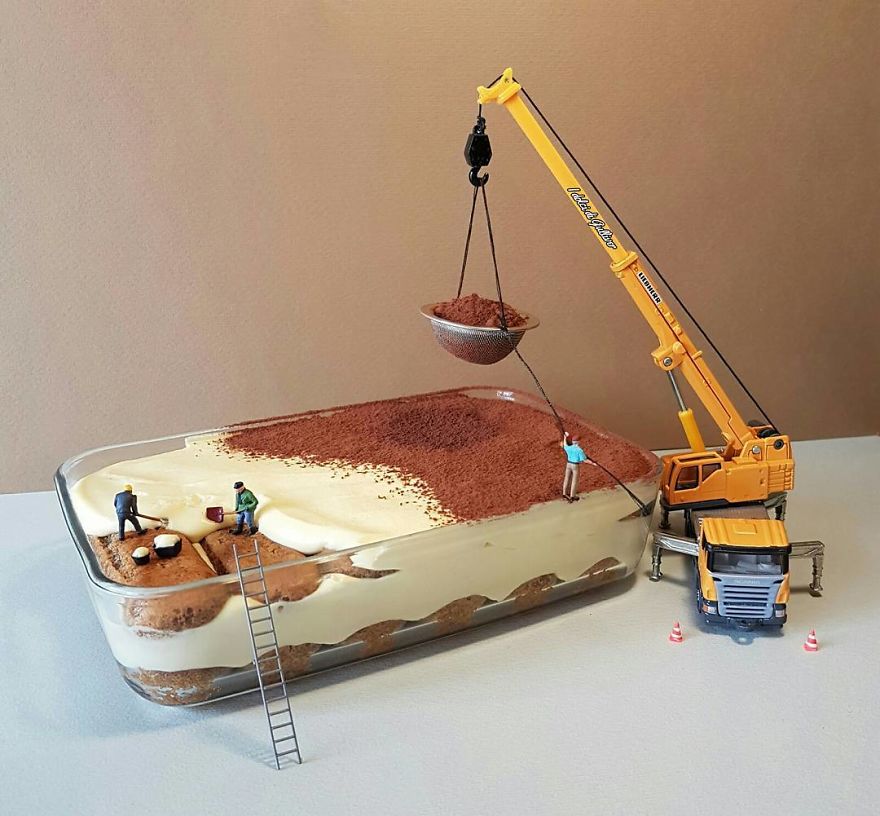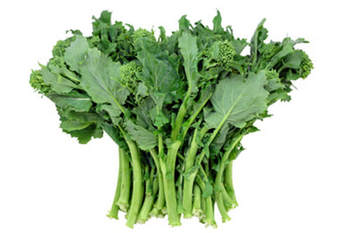
Broccoli rabe (räp’ - eh) is actually a member of the turnip family (rabe in Italian means turnip). The stalks, leaves, florets or yellow flowers are all edible. The leaves and stalks are usually cooked to soften their toughness and the flavor can be described as nutty, bitter, peppery or spicy and reminiscent of mustard greens. Broccoli Rabe can also be called broccoli raab, broccoli rape, or rapini, although, botanically speaking, rapini is a different plant entirely.
Rapini and broccoli rabe are close cousins and their names are often used interchangeably. They are in the same subspecies as the turnip, hence they have the characteristically slightly bitter taste of this group. Neither Rapini or broccoli rabe form the large floret heads that are seen in broccoli. “Rape” is the Italian name for turnip. Broccoli Rabe is not broccolini. Broccolini is a hybrid created in 1993--a cross between broccoli and Chinese broccoli. It has small florets, long stalks, and a few small leaves, where Broccoli rabe has large leaves. Broccolini stalks look like asparagus. 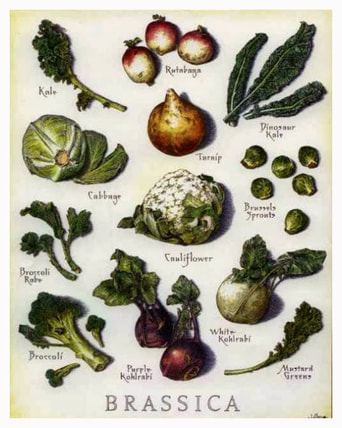
History
Native to the eastern Mediterranean and Asia and one of the earliest cultivated crops, broccoli rabe (Brassica rapa) was first eaten for its roots and leaves. It can also be allowed to flower and go to seed, with seeds collected and crushed for their high oil content (40 percent), commonly known as rapeseed oil, or in today's cooking as canola oil. The oil, in its simplest form can be used as lamp oil and a lubricant, in the same way olive oil has been used throughout history. Brassica rapa may have been used as oil in Italy as early as the 13th century and was the major lamp oil in Europe by the 16th century. Botanically speaking, Brassica campestris, Brassica rapa and Brassica napus are identical. In Italy, there can be different names for it: in Naples it is known as friarielli; in Rome broccoletti; in Puglia, cime di rapa (literally meaning "turnip tops"). It is also known as i broccoli friarelli and sometimes broccoli di rape, rapi, or rapini (little turnips).
How to Use Broccoli Rabe
How to use broccoli rabe in Italy depends on the region... in northern Italy, they will throw away the florets and use only the leaves, while in southern Italy, they will throw away the leaves and each only the florets. It is a cool season crop, so you will find it locally--and fresh--during late fall, through the winter and into early spring. In U.S. supermarkets, you can usually find it year-round, grown in other countries and flown in. Broccoli rabe contains tons of nutrients: 3-1/2 ounces provides half your daily requirement of vitamins A and C. It’s also a good source of folate, potassium, fiber, and calcium. It's also high in antioxidants, protecting you from cancer, inflammation and coronary disease. Make sure you are buying fresh broccoli rabe. Look at the base of the stalks for a cream color (not dark). They should be crisp, not floppy. The leaves should not be floppy or dried out and the buds should be bright green. If they are yellowed, pass them by. It's natural bitterness is lessened with cooking and pairs well with strong flavors like pork sausages or starchy things, like pasta, rice and potatoes. If you like it milder, just cook a bit longer, or after blanching in very salty water (the way you cook pasta), remove from the water, drain and then saute in olive oil. (In Puglia, they tend to omit the blanching in water). As for the stalks, if they are large, peel them first before cooking, they same way you would peel asparagus. If you are using the florets, throw them into the pan after stems or leaves... they are tender and cook fast. If you are growing your own and your plants have started to bolt and produce yellow flowers, it's not a total waste (see below about plants "bolting"), just snip the edible flowers to toss into soups or salads or to top off your plating.
How to Grow Broccoli Rabe from Heirloom Seeds
The only difficulty is that the seeds are very tiny. You can sow them directly in the garden, but then thin the seedlings as soon as possible to 4 - 6 inches apart. You can use the seedlings right away by washing and tossing into your salads and soups. When to grow broccoli rabe is up for debate. While it is considered a cool weather crop, like turnips, lettuces or radishes, many old Italians will tell you that they grow it all year long--even when the weather turns hot. You can plant seeds right after the last frost, but need to grow smaller and faster growing varieties... and remember to cut and harvest just as the florets are forming... not after. Interestingly, varieties might have numerical names that correspond to their growing cycle, such as Quarantina (40 days), Sessantina (60 days) or Novantina (90 days), but regardless of the name, you need to pay attention to the plants and harvest immediately as soon as you see the florets forming... and all varieties tend to form flowers earlier than the seed packets claim. Wait too long--a day or two--and your plants will bolt (stop growing leaves and put their energy into producing seed). If this happens, this bitter plant will instantly turn into that proverbial bitter pill. Stalks will store in your refrigerator for about 10 days, so it's best to stagger the planting of your seed into batches a week or more apart to ensure a fresh supply during the growing season. One warning about growing broccoli rabe from seed... they tend to cross pollinate with other braccias like broccoli, turnips and even it's distant cousin, mustard. Don't plant braccias too close to each other.
If you want an authentic way to make the famous dish from Puglia, Cime di Rapa, check out this video with Gennaro Contaldo, from the Two Greedy Italians cooking show from BBC... Favoloso!
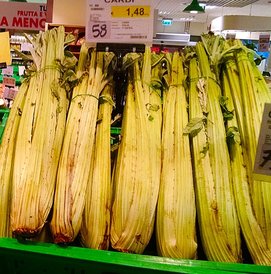 Cardi as we first discovered in in a Montepulciano market Cardi as we first discovered in in a Montepulciano market In the very first market we visited in Italy, we came upon a strange looking, rugged celery-looking vegetable: Cardi (Cardoon in English, in Italian it's Cardo, Cardone or Carduna). But Cardi is not celery and it is used in a very different ways. In talking to other Foodies in the States, I have found that many confuse Cardoon with Swiss Chard, or worse, with Rhubarb (which, because of its sweetness is used more like a fruit, as in pies). I thought I would explain the differences between this confusing batch of stalk veggies... 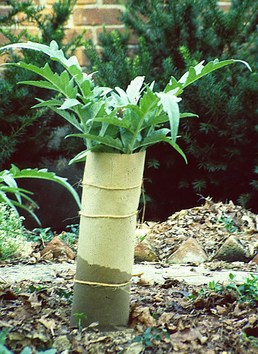 Blanching Cadri Blanching Cadri Cardoon is a member of the thistle family and a close cousin of artichoke, but unlike the artichoke, the stalks and not the flowers are eaten. In fact, it tastes like artichoke. If you like artichokes, you should enjoy Cardi. Cardoon grows in the field as a fairly dangerous, spiny plant, just like thistle. Unlike celery, its ribs are fibrous (and much more stringy) and need to be removed using a vegetable peeler. Along the sides of each stalk are fairly sharp barbs which also need to be peeled. Eaten raw, the stalks are nearly inedible--amazingly bitter, fibrous and tough. In general, there is no such thing as overcooking Cardi if you want to get them tender enough to eat--while getting rid of their dental-floss stringiness. In Italy, the average supermarket variety of Cardi on sale looks like a rough textured, perhaps dirty celery, with the tops trimmed off and bound by a twist tie, but in open air produce markets, you might find more choices. Often you will see a very tall (3-4'), straight variety with its thistle looking leaves intact. There is also another called Gobbi, a curved, hunchbacked type. Blanched Cardi are grown in darkness to produced a very pale color, in the same way white asparagus or white endives are grown by covering the maturing stalks. These are the more expensive and prized for culinary use because their taste is less bitter and they tend to cook faster. Their taste when well-cooked, as I mentioned earlier, is like artichoke, but with a smokey edge and hint of licorice, as with finocchio (bulbing fennel). If you ever decide to grow Cardoon in your garden, always remove the beautiful blue flower heads (they look like thistle flowers) to prevent the plant from dropping seeds or your garden will have hundreds of weedlings coming up next season. Swiss Chard (Bietola)
You can sauté Swiss Chard leaves and stems in a small amount of extra-virgin olive oil and season with freshly ground black pepper, minced garlic, and freshly grated Parmesan cheese. Eat as a side dish or as a baked potato topping. You can also cook the stems by first cutting in a small dice to soften them and adding to salsa, relish or chutney. Rhubarb (Rabarbaro) 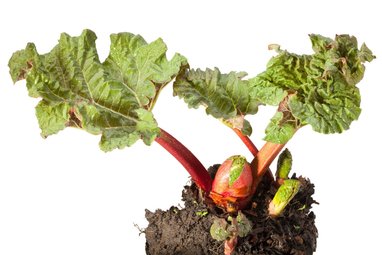 The main difference between Rhubarb and the other "stalk" veggies discussed here is that it does not grow in a head. The stalks grows from a woody rhizome individually and are harvested by cutting each close to the ground. Of course, the obvious difference is that, although a vegetable, Rhubarb is used in the same way we use sour cherries in pies. They are highly acidic and blend well with other sweet ingredients.
Sauteed Cardone Recipe Ingredients:
--Jerry Finzi
We've been making authentic French Onion Soup for many years, mostly using Julia Child's techniques and ingredients. The last few years, I discovered that I preferred using a sharp Provolone cheese in place of the usual Gruyere, putting a slight Italian touch on the dish. But this year, I though I'd see just how Italian I could go, making our Zuppa di Cipolle Italiano. So first, instead of any type of onion, I thought I'd use my favorite sweet onion... Vidalia. It sounds Italian, doesn't it? I know, I know, the name isn't Italian--they are named after a town in Georgia, but they are very sweet. I thought I'd also swap out the Vermouth for Italian sweet Marsala wine. The two have very similar flavor profiles. I usually use a Cognac like in the original Child recipe, but this time I'd use Grappa. Pepperoncino (red pepper flakes) would add a bit of heat in the soup itself, and for the cheese, I would use creamy Italian Fontina... a sprinkle of Oregano to top it off. I always hated the way most restaurants put one large, crusty-edged, crock-filling slab of bread on top of the soup, and then melt the cheese on top of that. First, it's nearly impossible--using a spoon--to cut a small piece of bread from the crusty, toasted slab. Secondly, the cheese often melted into a solid mat on top of the bread, often coming up in a thick sheet when you're trying to get just a small amount on your spoon. I've eaten French Onion Soup (they just call it "Onion Soup") in France where the cheese was grated and melted down into the soup, forming creamy strands of cheese that mixed with every spoonful. For the bread, I wouldn't use French baguettes slabs, but cubes of ciabatta. In this way, each and every spoonful gets some soup and a piece of bread, with the added bonus of the cheese melting down into the soup and becoming part of it. If you gently push the bread cubes down into the soup before putting the shredded Fontina on top, you'll get a texture similar to some of the bread soups alla povera (peasant style) I've had in Italy. The other thing I changed was the texture and cut of the onions themselves. I've had some versions where the onions were cut so thick and in such long strands that they attempt to choke you as you swallow--especially if they weren't property caramelized. So, my method is taking half of the onions and cutting them into a dice, with the second half cut in quarter-circles, so the strands are much shorter. In this way, you still have a decent texture, but with the diced onions permeating every part of the soup.  Ingredients 8 cups onions (about 3 pounds), half diced/half quarter-julienne 2 tablespoons butter 2 tablespoons Extra Virgin Olive Oil 1/2 teaspoon salt 2 tablespoons sugar (to help with caramelizing the onions) 1 teaspoon pepperoncino (red pepper flakes) 2 tablespoons flour 64 ounces (8 cups) beef stock (2 cups should be hot) 4 tablespoons Cognac, Brandy or Grappa 1-1/2 cups sweet Marsala wine (the real wine, NOT a "cooking Marsala") 1 leftover rind of Parmigiano Reggiano (or cut the rind from a new wedge) Salt and fresh ground black pepper at the end to adjust the finished flavor 1 loaf of Ciabatta bread, cubed as need Fontina (we used Bel Gioioso brand, or Fontina Val d'Aosta if you can find some) Oregano for dusting the finished soup
When the soup is finished, taste it and adjust for salt and ground black pepper. I added only about 1 teaspoon of sea salt to mine, but it depends on if the stock was salty or not. Trust your palette. In the end, I think I added about 20 cracks of black pepper. 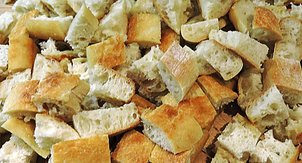 Ready to Serve
There you have it. The taste is luscious, rustic, hearty, sweet and definitely more Italiano than French. I hope you enjoy my Zuppa di Cipolle Italiano... Let me know how yours turned out... Boun Appetito! --Jerry Finzi Copyright 2017, Jerry Finzi/Grand Voyage Italy - All Rights Reserved
|
Archives
July 2023
Categories
All
|

